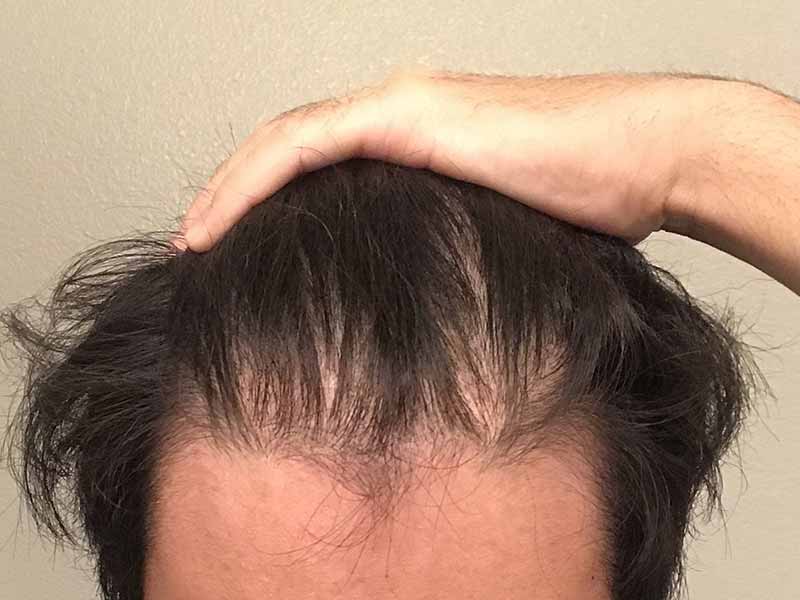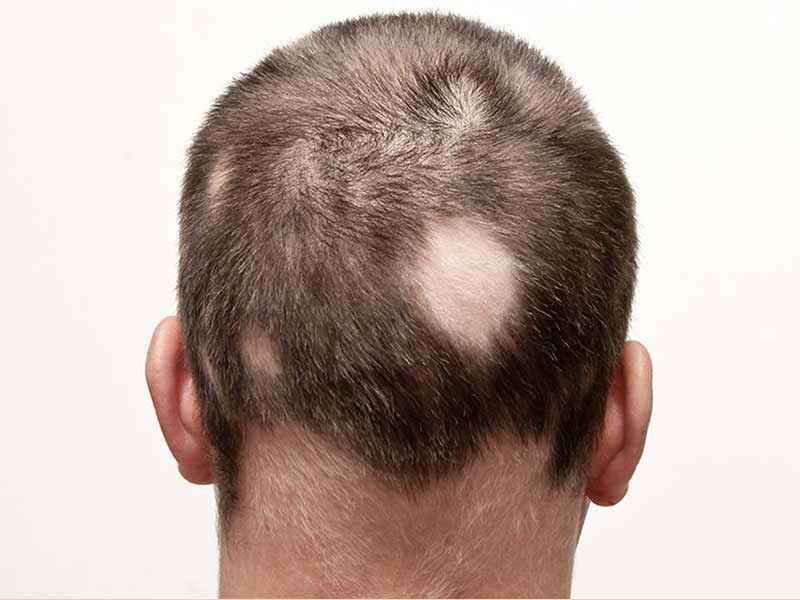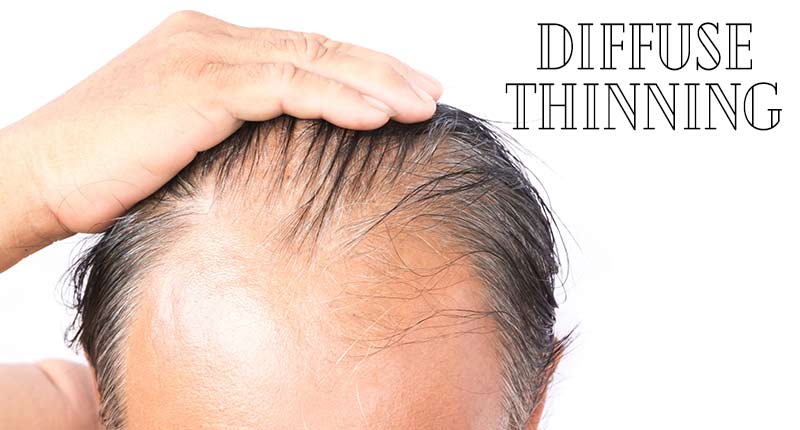People always have problems with their body parts that they cannot completely solve. With hair, we have shedding and hair loss – the two most common conditions that all people concerned about. But today we are not going to discuss them – there is also another related one called diffuse thinning.
There would be many people having questions like ‘What is diffuse thinning?’ and ‘What causes diffuse thinning?’ This post will bring to you not only the answer to these but also much extra information: typical types and some possible solutions.
Ready? Let’s come closer to it.
Table of Contents
What Is Diffuse Thinning?
Diffuse thinning is a condition in which people get problems with the shedding or thinning of hair throughout their scalp. For those who have known about hair loss, this is in contrast to it.

What Causes Diffuse Thinning?
The most common cause of diffuse thinning known is Telogen Effluvium (TE). TE is a form of temporary hair loss happening after mental problems such as stress, depression, and anxiety. However, we need to know about the cycle of hair growth first before getting inquire into the causes.
Other topics:
- Hair Topper For Thinning Hair 101 – Everything You Need To Know
- The Brand-New Idea On How To Hide Scalp With Thin Hair
- Does High Testosterone Cause Hair Loss? It Really Does!
How Does The Hair Grow?
The hair growth cycle includes three phases which are anagen, catagen, and telogen.
Anagen
Anagen, or the active phase, happens to determine the growing direction of the hair (upwards or outwards) and during it, we have the completed attachment of the follicles and the dermal papilla. It takes some time between 2 years and 6 years.
Catagen
The next phase is called catagen (transitional phase). Here the hair bulb, following the blood flow, moves away from the base.
Telogen
Once catagen is finished, the hair strand will fully detach from the follicles, and telogen begins. Here the hair sheds in an active way. Everything comes back to anagen by the appearance of new hairs. This is how the growing cycle of hair works.
Telogen Effluvium refers to a problem happening in this phase: new hairs do not appear. The condition may come in 2 cases:
– The hair follicles in the Telogen phase are longer than they should be;
– There are more than follicles allowed in the Telogen phase at any given time;
So what causes Telogen Effluvium? Let’s take a look.

Medications
For years, medications have been known as the most common causes of Telogen Effluvium, in which antibiotics and hormone therapies are mostly responsible for it.
You may know that people who are under any medication will get problems with hair loss very easily. But how exactly does this work?
The answer depends a lot on the type of medication. For instance, under the effects of hormone replacement drugs, the levels of estrogen and testosterone in your blood serum may show a clear change.
Particularly, Telogen is not the only phase in which you can get into trouble. Anagen Effluvium, which is another cause of diffuse thinning, can be triggered by medications, as well.
However, most of the conditions caused by medications are temporary, so you don’t have to worry too much about it.
Stress
Stress is somehow known to be responsible for diffuse thinning. Some people say that stress is just a feeling that is similar to sadness, but it has more impacts on the body than they can imagine. Physical or mental stress can lead to a triggered immunological response that plays a certain role anywhere in the body, not except for the hair scalp.
Let’s come to research in 2017 to understand it more specifically.
Increasing stress, according to the results, has a big risk to cause an increase in not only a type of pro-inflammatory messenger cell called cytokines but also hair follicles in the Telogen phase.
The good news for you is that diffuse thinning caused by this, similar to the one above, will not happen for long.

Androgenetic Alopecia
So you know about two causes of temporary diffuse thinning, and how about the permanent one? Here we come with it.
Androgenetic Alopecia is among the most common form of hair loss in men and women. You can find out a more well-known word is ‘male-pattern baldness’ – it also means that men will get more problems with this.
As mentioned above, diffuse thinning caused by this is hereditary, so, unfortunately, there is no cure discovered.
Jump to:
- The Culprits Behind High Hairline & How To Fix It
- Jason Witten Hair: The Secret of The Dallas Cowboys TE
- Will 2020 Be The Year Of Side Swept Hair Men?
Signs Of Diffuse Thinning
Diffuse thinning is not always easy to notice. It may come suddenly or take place for years. However, you should be aware of its signs to avoid as many unwanted conditions as possible.
Excessive Shedding
The normal amount of hair shed every day is usually among 50 and 100 hair strands, so except for some special conditions, any more than this is a sign of problems and Telogen Effluvium is one of them.
You may see your air excessively shedding on your pillow every morning you wake up or in the drain after a shower.

Receding Hairline
Diffuse thinning can badly affect the whole hair scalp but you still can soon notice the first sign of it by looking at your natural hairline.
People will gradually lose their hair at certain points of life, 30 years or older but it nearly never begins to recede in the temples.
In most cases, the receding hairline happens as a sign of diffuse thinning caused by AGA (i.e. the hereditary condition which has no known cure).
The Bottom Lines,
Now you know many important things about diffuse thinning: what is it, where does it come from, and some signs of it to let you know more easily. Of course, the amount of information we bring you will not be enough, and in case there is anything you are questioning about, feel free to leave a comment below or even go to meet the doctor for the most accurate diagnosis.
Have a nice day and enjoy a healthy life.


